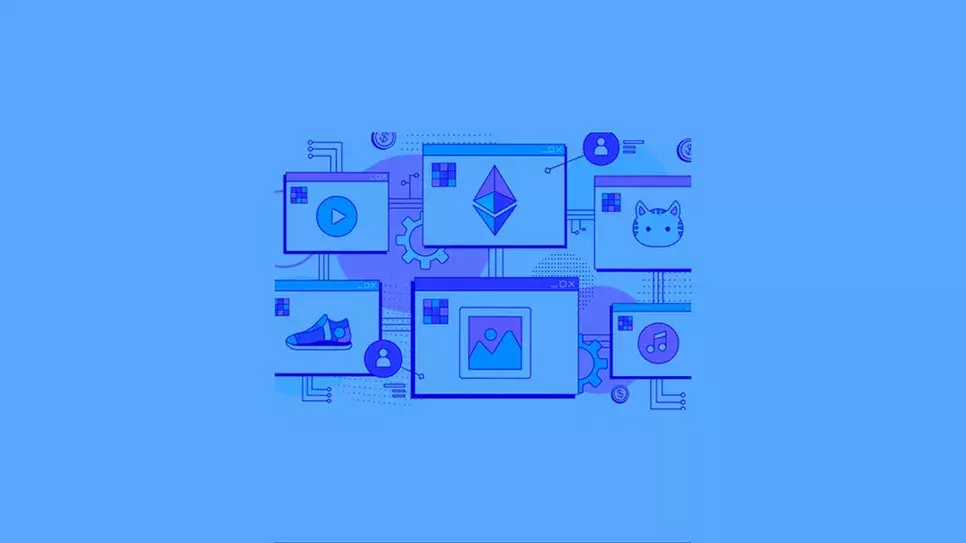Subscribe To Our NewsLetter
Share This Post:
The Internet as we know it today is broken, centralized, and vulnerable to censorship, and we need to make the Web free again.
So, What’s the Solution?
It is Web 3.0. It will be a decentralized, peer-to-peer version of the Web that any entity or government can’t control, making it impossible for anyone to censor your content or steal your data without your permission. It will be open source and built on top of Ethereum (or Bitcoin) blockchains.
Read on this article as we learn how Web 3.0 will shape the digital world; before that, it is imperative to know what Web 1 and Web 2 are and how Web 3 is Different from Them.
What is Web 1.0?
Web 1.0 is a term that refers to the first phase of development of the World Wide Web, which began in 1990 but became popular with users in August 1995 when Microsoft released its first major web browser, Internet Explorer 1.0.
The World Wide Web was a set of static documents and web applications in this phase. Web 1.0 components were primarily individually crafted, ad hoc hypertext documents with a Western bias.
What is Web 2.0?
Web 2.0 usually refers to web applications that allow users to interact and collaborate and the software on the site. Sites like Facebook, Twitter, and Google+ are examples of Web 2.0 sites.
The original concept of Web 2.0 was that the Web would become more like an application platform, complete with its user interface and applications that users could download and install. The idea was that the web browser would become a platform for applications, not just an interface through which users interact. Web 2.0 was the term used to describe this new development on the Web, and it refers specifically to user-created content combined with the interactivity of web applications rather than to an update in technology.
How Different is Web 3.0 from Web 2.0?
Web 2.0 raised the importance of social media and collaboration online, whereas Web 3.0 will emphasize decentralization, privacy, and encryption.
Blockchain technology is the backbone of cryptocurrencies such as Bitcoin and Ethereum, and will help decentralize the Web. Blockchains enable peer-to-peer transactions of cryptocurrencies, which can develop a decentralized web. There are already open-source projects such as Metamask and Mist from Ethereum that aim to decentralize applications on the Web. These technologies are trying to revolutionize the Internet by enabling users to have more control and ownership over their data and information.
New technologies such as IPFS (InterPlanetary File System) and BigchainDB allow users to store and share information and data. Both of these technologies involve the decentralization of large chunks of data, which can help facilitate the creation of a decentralized web.
Web 3.0 is not just about decentralizing data but also improving encryption and privacy. The use of blockchain technology to encrypt information on the Web will enhance individuals’ security.
Cryptography is used to encode information, making it difficult for third parties to gain access. Cryptography is essentially used in various ways to enhance users’ privacy, such as protecting data from being read by other people who are not the intended recipient. There are already protocols for internet browsers to encrypt connections, but this is just the beginning.
Protocols like TLS (Transport Layer Security) and HTTPS (Hypertext Transfer Protocol Secure) help secure internet connections and encrypt data transported across the Internet, which will become more important as we move into the future.
Web 3.0- The Future of the Internet And Its Impact On Digital World
The next evolution of the Internet will be a more open and decentralized platform, where users have control over their data and new technologies become simple commodities.
We are transitioning to Web 3.0, and this is how it will happen?
The Web has gone through many phases in its short history (Web 1.0 – static HTML and Web 2.0- client-server dynamic pages), and we are now seeing a growing consensus that the third phase will introduce a new trust model.
The phase after Web 2.0 removes centralized control and allows any connected computer to interact with other computers without the restrictions imposed by central service providers (CSPs).
Web 3.0 will see a decentralized web, using peer-to-peer protocols instead of HTTP, and require no central authority to authenticate users or route data. In this new Web, websites are directly linked without going through a CSP intermediary, and users can control their data.
The transition to Web 3.0 is underway, with the development of new internet protocols that are decentralized and open source. The data layer is being re-built with decentralized apps (Dapps) that work like normal web applications without a centralized server.
These can be thought of as ‘permission-less’ web services that let you access the blockchain using any of its multitude of interfaces.
Web 3.0’s impact on the digital world is the transparency of networks, which would allow users to have more control over how their data is shared.
Decentralization would also remove the need for centralized servers, which can be hacked or have their information stolen.
Conclusion
With the ever-changing landscape of digital media, you must stay up to date on what is happening. Web 3.0 will have a significant impact on using social media and other online tools for collaboration.
Share This Post:
Author Information

LN Webworks
Your Drupal Solution PartnerLN Webworks have championed open-source technologies for nearly a decade, bringing advanced engineering capabilities and agile practices to some of the biggest names across media, entertainment, education, travel, hospitality, telecommunications and other industries.
